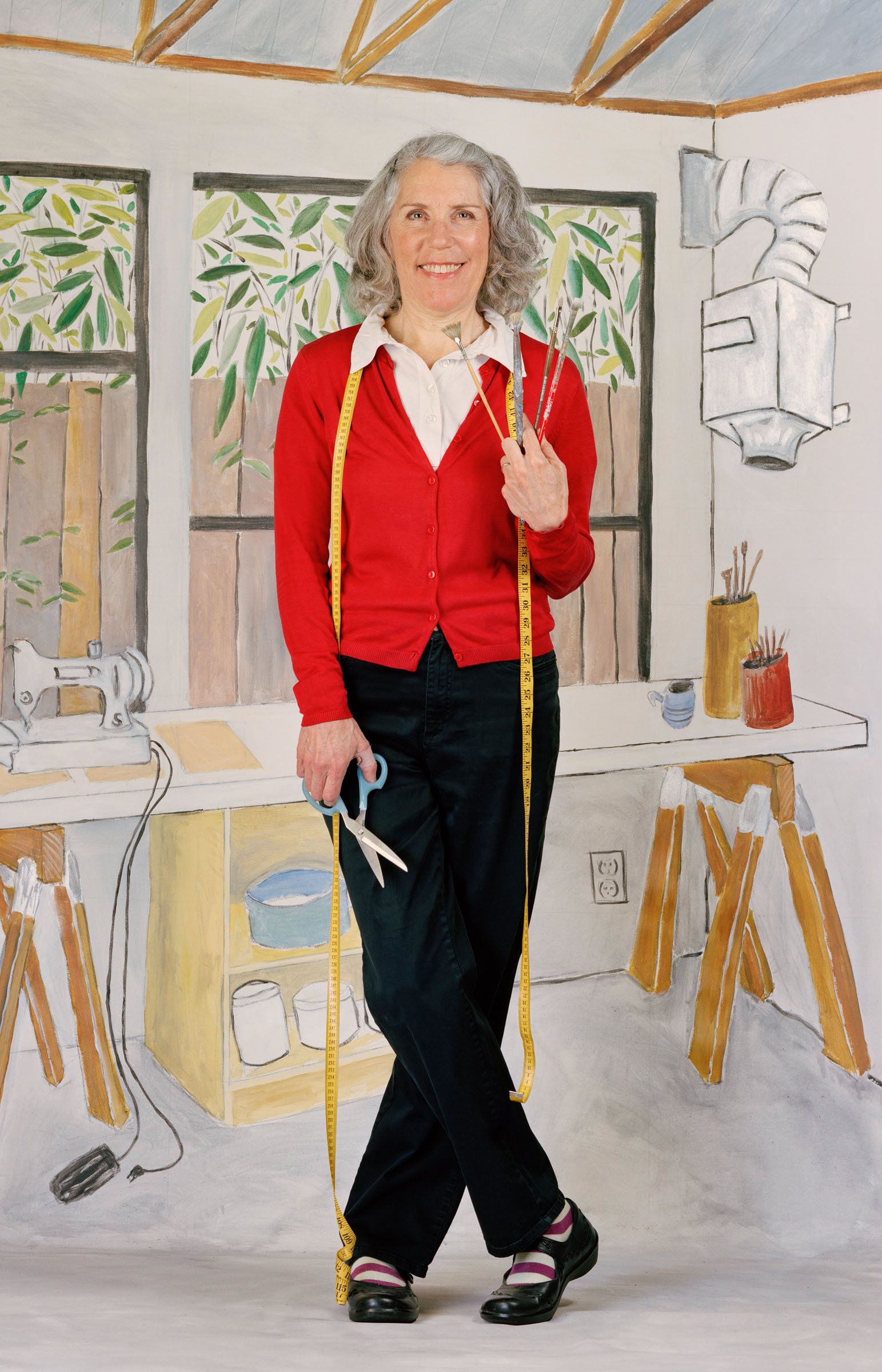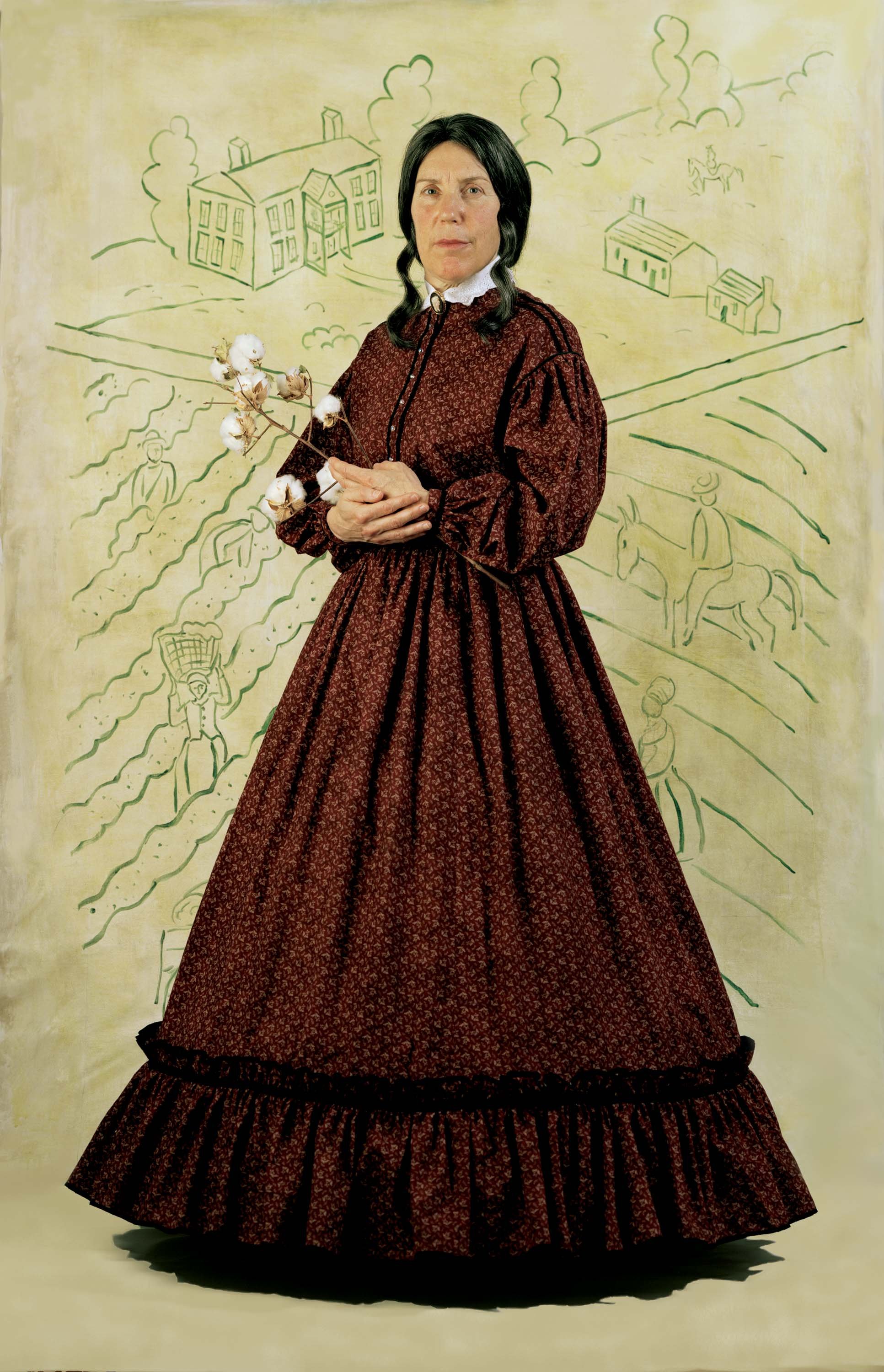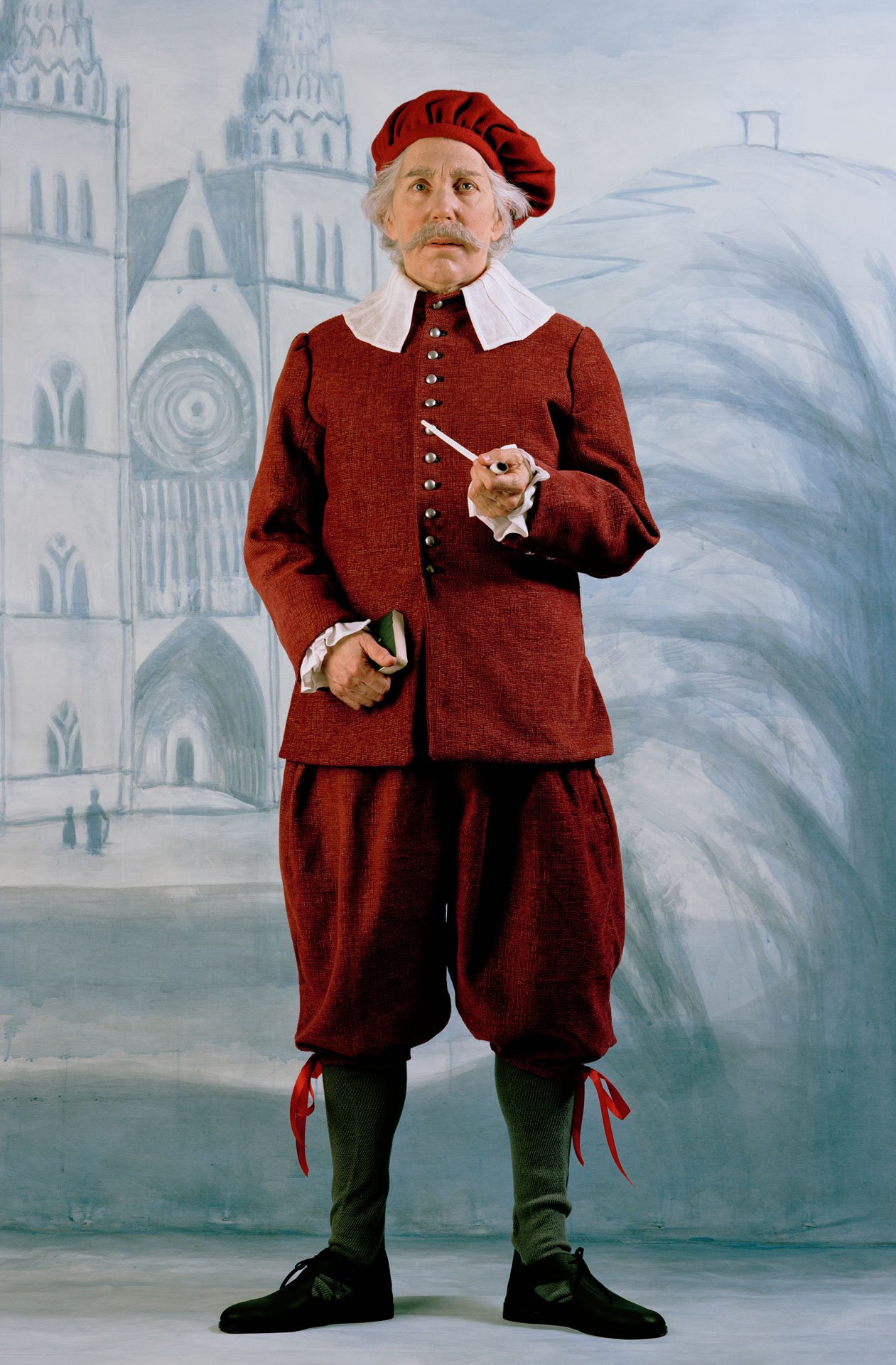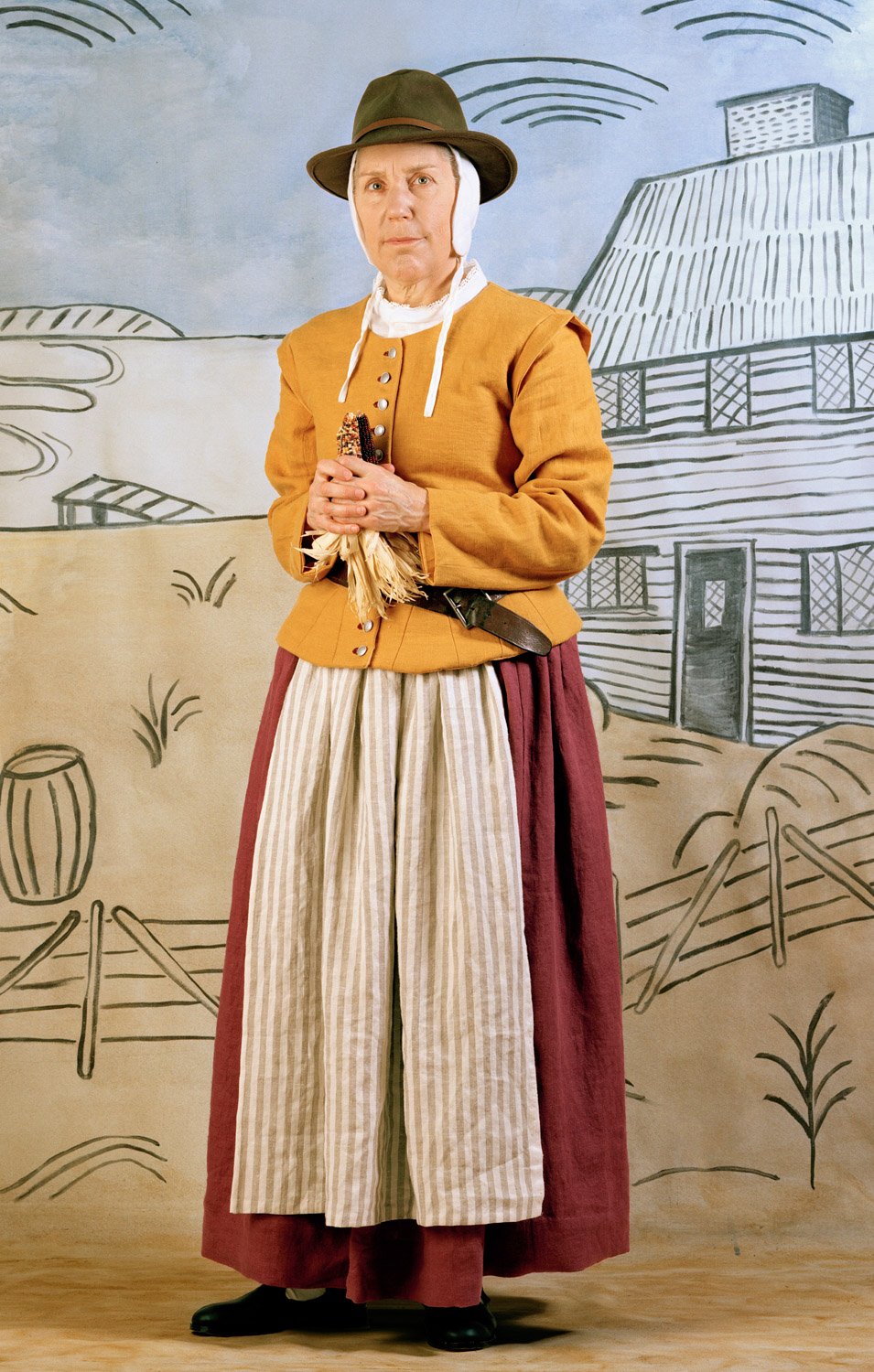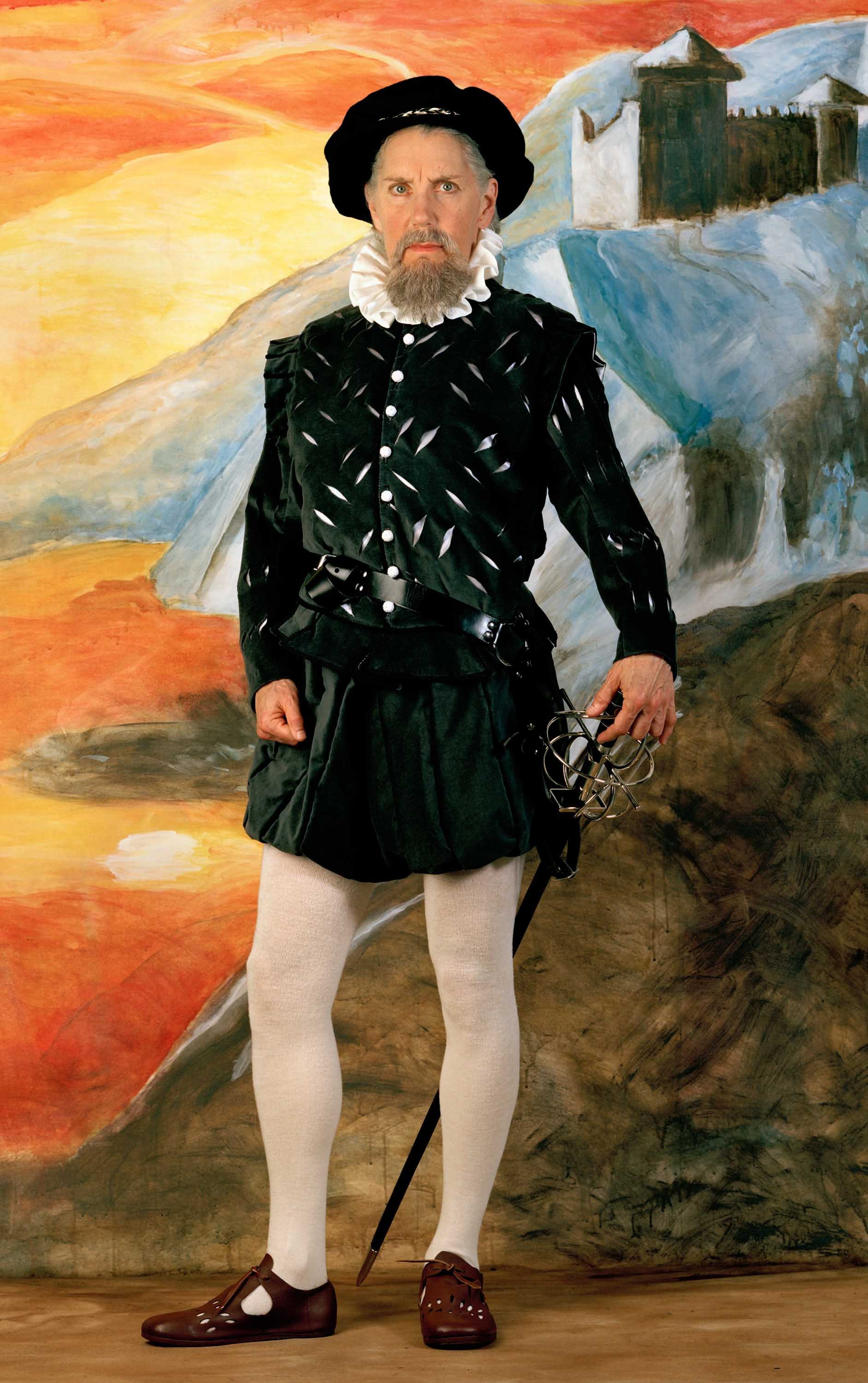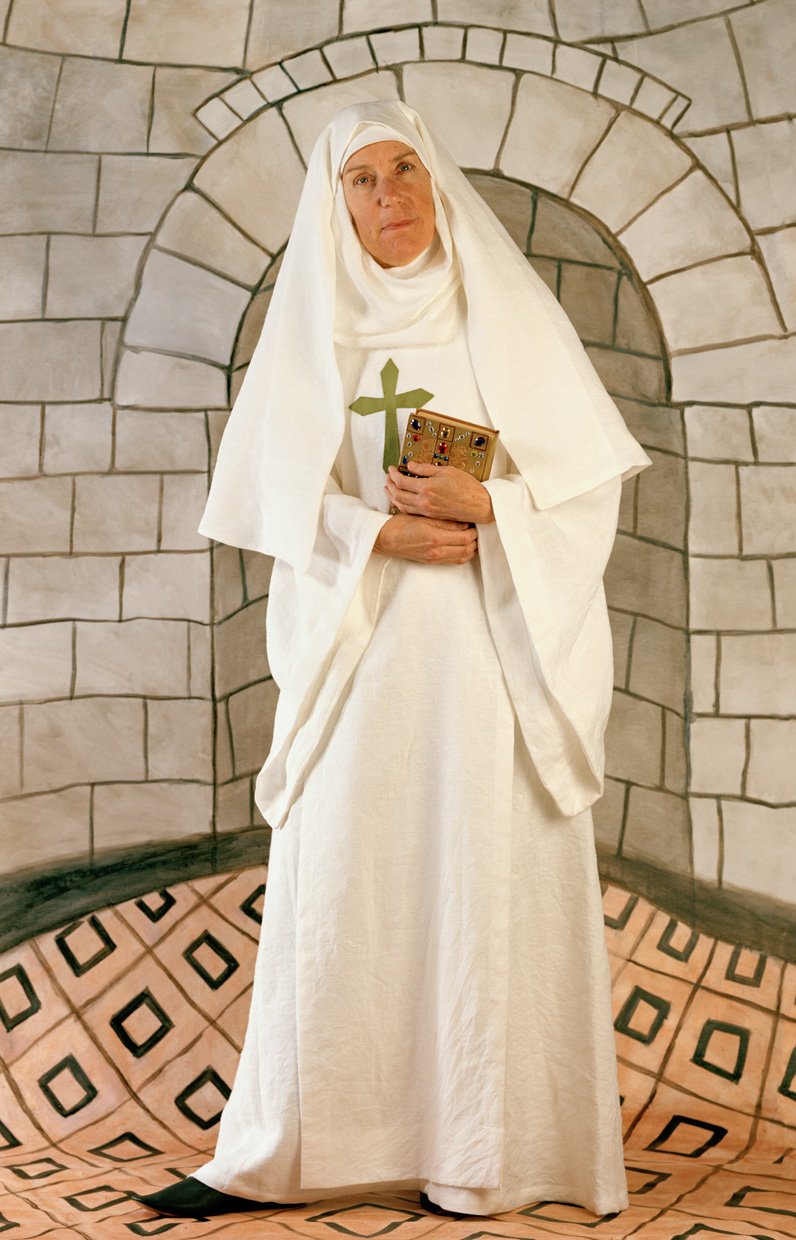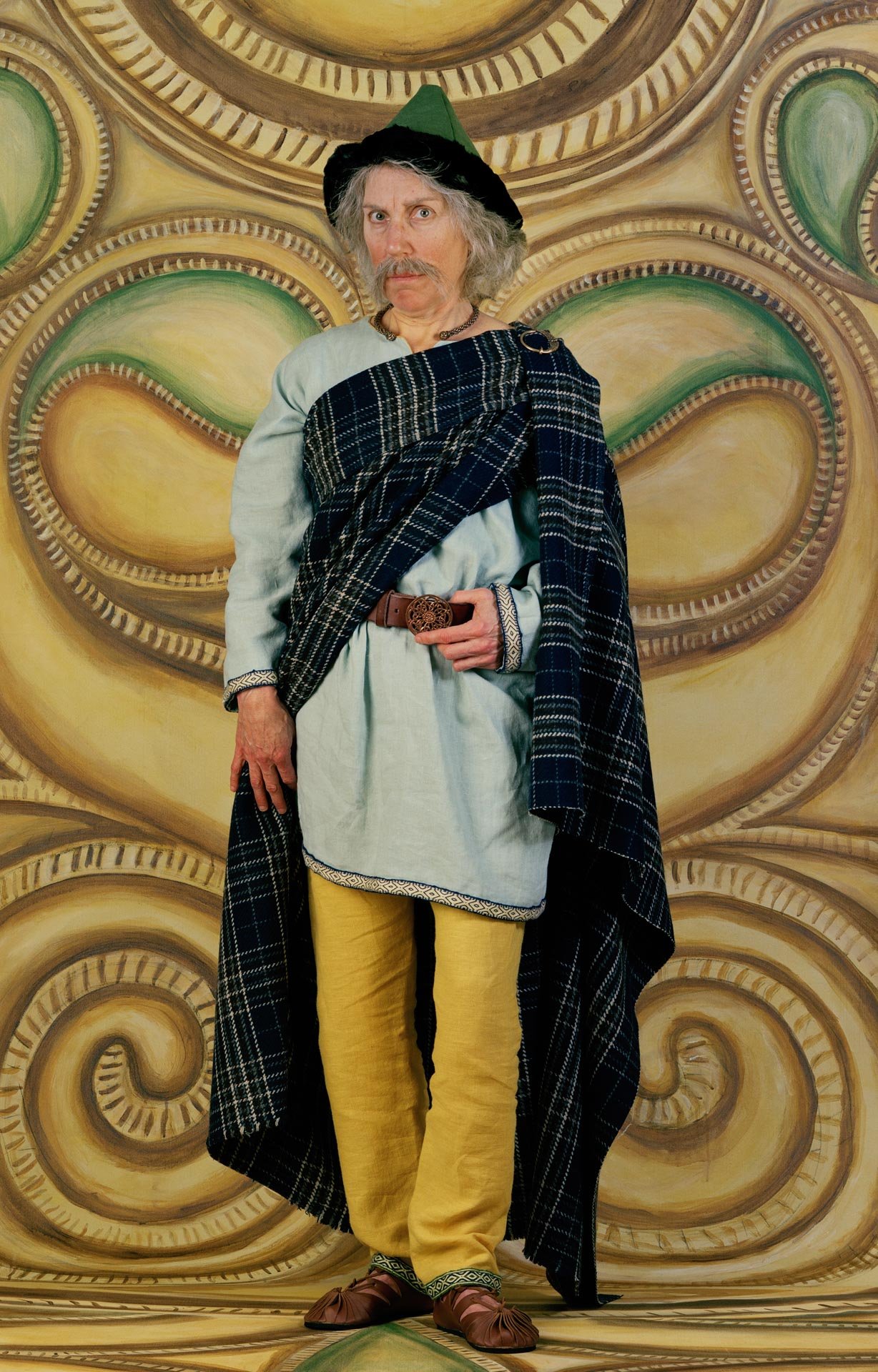
I AM MY WHITE ANCESTORS
PORTRAITS
Photographic portraits on fabric panels, 84" x 54".
Concept and design: Anne Mavor
Photography: Jane Keating with Jim Skates
ANNE HUNTINGTON MAVOR
1952- MARYLAND, MASSACHUSETTS, CALIFORNIA, OREGON
When I started college, my father warned me not to tell anyone about my money because they would take it away from me. I think that was the only direct advice he ever gave me. It still feels dangerous to defy it. But I wanted my story of oppression to be as true and bare as that of my ancestors. It’s so easy to lie, especially about money and ways I have been mean to others. The half-truths just slip out. Actually, the hard part of finally telling the truth was keeping it to five minutes. Once I started remembering, there was so much to tell!
EUGENIA MARY FELDER BUCHANAN
1823-1898 SOUTH CAROLINA, ALABAMA, TEXAS
My own grandmother might have known Eugenia. I can see her stoic obedience also reflected in me and my mother. Eugenia followed her husband John all over the Confederacy trying to avoid the end of slavery. Was she torn between leaving her baby daughter Adele behind in South Carolina and going with her husband and sons to build a new planation in Alabama? At the end of the Civil War, while John fled to Mexico, it was Eugenia who set their final few slaves free. She and her children then sneaked through blockades to make their way to relatives in Texas. I would have been intimidated by her.
JOHN SALLEY
1740-1794 ORANGEBURG, SOUTH CAROLINA
To wear this coat properly, you must stick your chest out and push your shoulders back. I imagine that helps with feeling arrogant and sure of yourself. For John, the son of Swiss immigrants, there was no question that amassing property and wealth was the right thing to do. He was an Indian fighter and a member of the South Carolina Congressional Congress during the Revolutionary War. He stands today on his land, an upstanding citizen in the growing colony, looking forward to making a killing in the cotton industry. It was hard to like this ancestor. I couldn’t wait to rip off his outfit.
MARK MAWER
1620-1670 URQUHART, MORAY, SCOTLAND
Most of the male characters felt distant to me. Not so with Mark, a farmer who helped convict two women of witchcraft. The moment the mustache was glued on and I donned Mark’s red suit, I felt bumbling, slightly drunk, and stupid for allowing my mind to be swayed by my distraught mother and the church fathers. When I imagine my current self sitting in that jury box, there is no question I would have also followed orders. To stray from the will of the group would risk being ostracized.
DESIRE HOWLAND GORHAM
1623-1683 PLYMOUTH COLONY, MASSACHUSETTS
I felt sympathy for Desire. She was born in Plymouth and lived in Barnstable, MA, both places close to Woods Hole where I grew up. In Massachusetts, children are forced to learn the history of the Pilgrims yearly so the story was etched in my brain. I also chose her for the project with the hope that I could show the complex relationship between the settlers and the Wampanoag people. When I found a reference to Tooto, Desire’s Indian servant, I could hardly believe it. I also found Tooto’s will, where he asked to be buried at her feet because of his love for her. I cried for weeks over this.
SIR NICHOLAS BAGANEL
1510-1590 NEWCASTLE UNDER LYME, ENGLAND AND NEWRY, IRELAND
To be honest, I identify with his ambition and opportunism. I well imagine he cared for his wife. But the fact is, he gained several large estates in Wales as a result of the marriage. He also was a loose cannon, violent, and crafty, using his position to help his sons in their careers. His loyalty to Henry VIII and Queen Elizabeth was commendable but oh so useful. They wanted to corral the migratory Irish into plantations and take over their country. Sir Nicholas was the man for the job. Reminds me of the treatment of Native Americans just a hundred years later.
KATHERINE WYDEVILLE
1458-1497 ENGLAND
Her story is a typical one for women. The action goes on all around her in men’s lives while she waits and grieves. And there was a lot of action. She lived through the Cousin’s War, that long, bloody, and vindictive series of battles between close relatives over who would be king. It was an example of how greed and hunger for power clouds our minds. Her high position in society did not protect her. Married off as a child to the Duke of Buckingham, she watched the male members of her family beheaded one by one. How did that affect her?
MAGDALEN STROMAN
1310-1375 BASEL, SWITZERLAND
This is the story of what happened to the Jews of Basel in 1349 through the eyes of a gentile. To do this I needed to reach behind Magdalen’s murderous rage against the Jews and the Black Death to find a grief-stricken mother and wife. That was the only way I could stand there in a blue dress that I made by hand and look out at you. How can a community rise up against their neighbors? How can one group decide that another group is to blame for a natural disaster? When I started this project, atrocities seemed hardly real. I think I was numb. Fortunately the horror is starting to sink in.
KING EDWARD I
1239-1307 ENGLAND
I was surprised and a bit embarrassed to find this king in my search. I try to remember that he was once an infant like any other, not expecting to rule over others. But his course was set: to do whatever it took to increase his power and ensure his place in history. After conquering Wales, he expelled all the Jews from England in exchange for a huge tax windfall from the grateful knights. Yet I wonder if I am sometimes as autocratic and self-absorbed as he was. How many times do I want something at the expense of someone else? For instance, when do I put my comfort before the health of our climate?
SIBYLLA D’ANJOU
1112-1165 ANJOU, FLANDERS, AND KINGDOM OF JERUSALEM
I was raised Protestant and never expected to find a nun in my history. But I was quite pleased. Sibylla started out as a typical noblewoman with an advantageous marriage to Thierry, Count of Flanders. Her life started to deviate when he went on a crusade to the holy land leaving Sibylla in charge. She successfully defended Flanders from an invasion while giving birth to her son. But that was not all. When Thierry announced his next crusade, she insisted on coming along. Let’s just say if I could be any character, it would be her.
ROGER OF MONTGOMERY
1022-1094 ST GERMAINE, NORMANDY, AND SHROPSHIRE, ENGLAND
Wearing armor is a horrible thing. Wearing armor for days and days and trying to kill other people while also avoiding being killed is beyond horrible. I know this sounds flippant. It’s just so impossible to me. Yet men did this for a living. Or more accurately, they fought and killed because their lords required it of them and they stood to gain lands and wealth. Roger was one of them. His loyalty to the enterprising and ruthless Duke of Normandy, later known as William the Conqueror, made him one of the richest men in England.
RAGNHILDE HROLFSDOTTIR
830-916 NORWAY AND ORKNEY
I was stunned when I came upon Ragnhilde. She died in Orkney, a group of islands north of Scotland overrun by Viking invaders. Here it was, evidence of colonization that would be repeated 700 years later when my Pilgrim ancestors landed on the coast of North America in 1620. Like all the female ancestors, I was sympathetic to her constricted life and impressed by her courage. I could envision Ragnhilde immediately: spirited and strong, but also bitter and lonely. She plotted for years to gain her freedom and when the chance came, she took it. I just wish she hadn’t been so cruel.
DURST
300-250 BCE AUSTRIAN ALPS
What an intriguing character. Of course he is imagined, but Durst’s story is not far fetched. The Iron Age Celts had no written language and lived in autonomous tribes that regularly invaded each other. But they also left behind tombs filled with beautiful metalwork. They were violent, creative, competitive, and spiritual. To connect with Durst I made him a metal artist living in a striated society where everyone had a role to play. Slave, miner, metalworker, warrior, chieftain, farmer, shaman. What roles do we play to keep the system in place?


